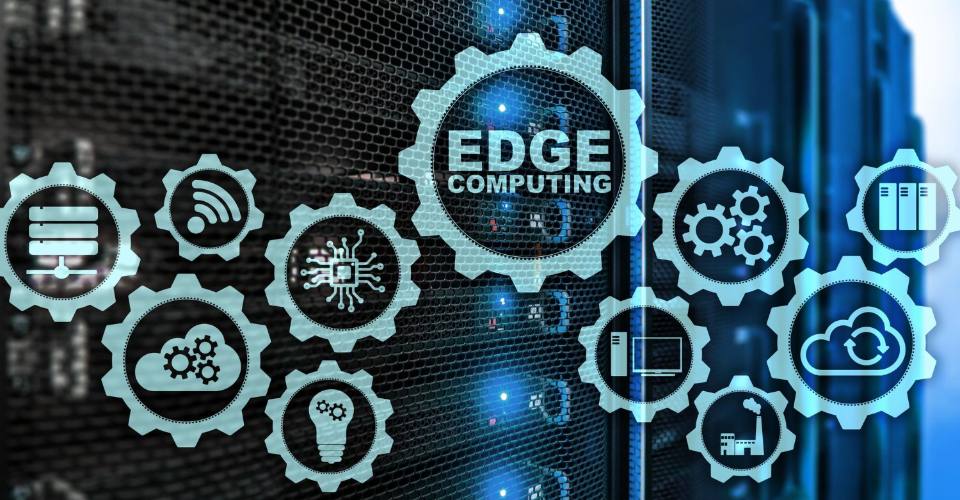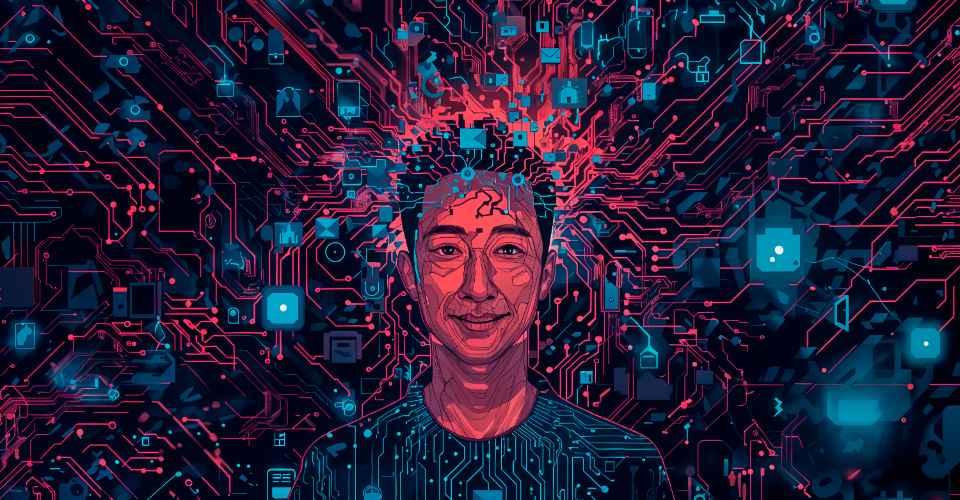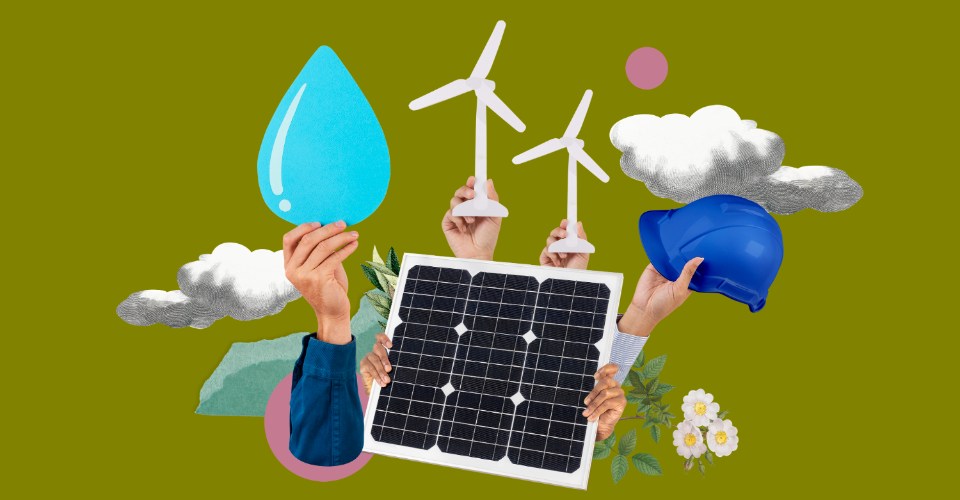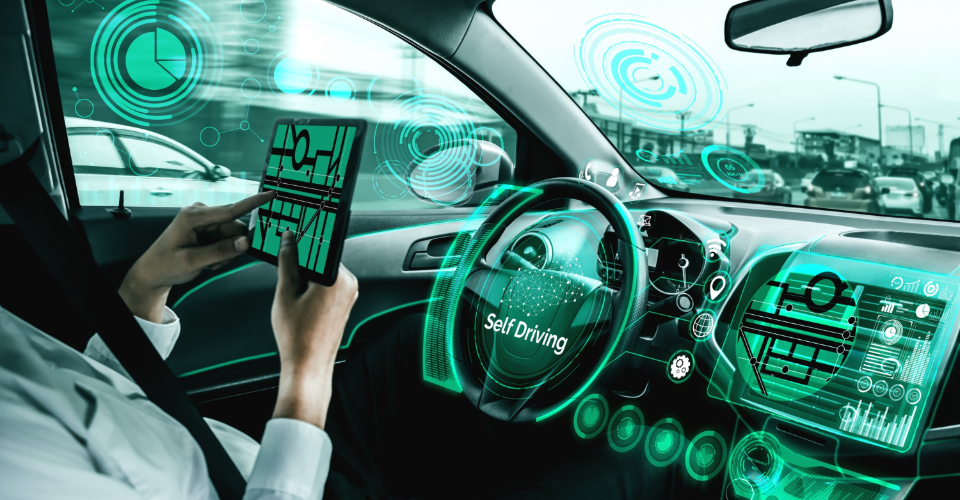Climate change is one of the most critical challenges of our time, with far-reaching effects on the environment, health, and economies. As the world grapples with the urgency of climate action, innovative solutions are essential. One such solution gaining momentum is Artificial Intelligence (AI), which holds immense potential to transform the way we approach climate change. With the ability to analyze vast datasets and predict environmental patterns, AI is becoming a powerful tool in our efforts to combat global warming.
But how can AI truly make a difference? Let’s dive into some key areas where AI climate technologies are already making an impact and explore their future potential.
7 Powerful Ways AI Can Combat Climate Change
1. Optimizing Renewable Energy Efficiency with AI
Artificial Intelligence (AI) is playing a crucial role in optimizing renewable energy sources such as solar and wind power, addressing the challenges of intermittency and efficiency. By leveraging vast amounts of data, AI is transforming how we harness and distribute clean energy.
Smart Grid Management
One of the key advancements in energy optimization is the implementation of smart grids. These grids are powered by AI, which helps predict energy demand patterns and balance the supply of renewable energy accordingly. AI algorithms can predict peak energy periods and adjust the distribution of energy in real-time, ensuring that clean energy sources like solar and wind are efficiently utilized.
- Enhanced Demand Prediction: AI-driven smart grids can forecast electricity consumption, adjusting the distribution of energy to prevent grid overloads.
- Real-Time Balancing: AI helps maintain stability by balancing renewable energy generation and consumption, even during periods of low energy output from renewable sources.
By improving grid management, AI ensures that renewable energy sources are used effectively, minimizing waste and reducing reliance on fossil fuels.
Energy Storage Optimization
AI is also revolutionizing energy storage systems, which are crucial for the effective use of renewable energy. Solar and wind power are inherently intermittent, and storing energy for later use is essential. AI algorithms are used to optimize battery storage systems, ensuring that energy is stored during periods of high generation and deployed during peak demand.
- Battery Efficiency: AI enhances battery performance by predicting energy storage needs and optimizing charging and discharging cycles.
- Cost-Effective Energy Use: By fine-tuning storage systems, AI reduces costs associated with energy storage and boosts overall energy efficiency.
For example, AI-powered systems adjust wind turbine blades to optimize energy capture based on real-time weather data, increasing wind power generation efficiency by up to 30%.
AI’s ability to integrate and optimize renewable energy resources represents a significant step forward in the global transition to sustainable development, reducing carbon emissions and promoting green technologies.nd turbine operation by adjusting blades for maximum efficiency based on wind forecasts.
2. Predicting and Monitoring Climate Patterns
AI is significantly enhancing our ability to predict and monitor climate patterns, offering crucial insights into the future of our planet. By analyzing massive datasets, AI models can create highly accurate and granular climate models that help us understand long-term environmental shifts. These advancements are pivotal in combating climate change and ensuring effective climate action.
Weather Prediction
AI algorithms are particularly effective in forecasting severe weather events, such as hurricanes, floods, and heatwaves. By processing data from satellites, weather stations, and sensors, AI systems can detect emerging patterns that human experts may miss. This allows for more timely and precise weather predictions, which play a critical role in disaster preparedness.
- Earlier Warnings: AI-powered systems can predict extreme weather events days or even weeks in advance, giving authorities and citizens time to prepare.
- Efficient Resource Allocation: With better predictions, governments and organizations can deploy resources more effectively, saving lives and reducing economic damage.
For instance, AI models have improved hurricane tracking, resulting in earlier evacuations and fewer fatalities.
Long-Term Climate Trends
AI’s deep learning capabilities are essential in analyzing long-term climate trends. These models process vast amounts of historical and current data, offering insights into long-term shifts in global temperature, sea levels, and carbon emissions. This helps scientists predict future climate conditions with unprecedented accuracy.
- Decade-Long Insights: AI can track subtle changes in the environment over decades, providing a clearer picture of future climate risks.
- Policy Development: The predictive power of AI helps policymakers make data-driven decisions to mitigate the impacts of climate change.
Studies show that AI-based climate models are up to 50% more accurate in predicting climate-related events than traditional methods, improving both short- and long-term climate action efforts. By using AI to forecast climate patterns, we can better prepare for climate change and create more effective strategies for sustainable development and reducing carbon emissions.
3. Enhancing Environmental Monitoring with AI
AI plays a pivotal role in improving environmental monitoring by providing real-time insights into climate change and ecological damage. Its ability to analyze vast amounts of data quickly and accurately offers a scalable solution for monitoring environmental conditions at a global scale.
Deforestation and Wildlife Protection
AI-powered satellite imaging and drone technology have become essential tools in tracking deforestation and illegal activities in protected areas. These AI systems use machine learning algorithms to analyze satellite images, detecting changes in forest cover or illegal logging in remote locations.
- Real-Time Monitoring: AI can process and analyze high-resolution images in real time, helping authorities detect deforestation as it occurs, enabling a swift response.
- Wildlife Protection: AI also assists in monitoring wildlife populations by analyzing patterns of animal movement, ensuring the protection of endangered species from poaching or habitat loss.
Studies show that AI-based systems can reduce deforestation by up to 25% in some areas by providing more effective monitoring and response mechanisms.
Pollution Detection and Management
AI has also revolutionized the detection of pollution across air, water, and soil. Traditional methods of environmental monitoring often require manual sampling and time-consuming analysis. In contrast, AI can continuously monitor pollution levels using sensors and satellite data, providing near-instantaneous feedback.
- Air Quality Monitoring: AI systems analyze data from air sensors to detect harmful gases, such as carbon dioxide and nitrogen oxides, which contribute to climate change and poor air quality.
- Water and Soil Monitoring: AI algorithms can detect pollutants in water bodies and soil, helping to address contamination before it causes widespread environmental harm.
For instance, AI technologies have been used to monitor air pollution in cities, leading to a reduction in harmful emissions and improved air quality in regions with significant pollution levels.
Protecting Marine Life
AI’s ability to process large data sets has been instrumental in tracking illegal fishing activities, a significant threat to marine ecosystems. By using AI to analyze satellite imagery and fishing vessel data, organizations can identify illegal fishing patterns, enforce maritime laws, and protect marine biodiversity.
In regions where AI is actively deployed to monitor illegal fishing, it has been reported that such activities decreased by 20%, contributing to healthier marine ecosystems.
Through these advancements in AI, environmental monitoring is becoming more proactive and efficient, allowing us to take timely actions that are crucial for climate action and sustainable development.
4. Efficient Resource Management with AI
AI is revolutionizing resource management across various sectors, driving sustainability by minimizing waste and maximizing efficiency. Its ability to analyze vast amounts of data in real time is transforming industries, helping them conserve natural resources and reduce their environmental footprint.
Smart Agriculture: Sustainable Farming Practices
In agriculture, AI tools are helping optimize resource use, particularly water. By utilizing data from sensors, weather forecasts, and satellite imagery, AI systems can predict irrigation needs and adjust water usage accordingly. This leads to more efficient irrigation systems that conserve water, a critical resource in water-scarce regions.
- Water Conservation: AI has helped reduce water consumption in agriculture by up to 30%, enabling farmers to optimize their water usage without sacrificing crop yield.
- Predicting Crop Yields: AI-based tools forecast crop yields more accurately by analyzing weather patterns, soil conditions, and historical data, allowing farmers to make informed decisions about planting and harvesting.
These AI advancements in agriculture contribute to sustainable development by promoting more efficient resource use and reducing the environmental impact of farming.
Sustainable Manufacturing: Reducing Waste and Energy Use
In manufacturing, AI-driven systems are improving operational efficiency by predicting equipment failures and optimizing production processes. By identifying potential issues before they become major problems, AI reduces downtime and helps factories operate more efficiently.
- Waste Reduction: AI can analyze production processes in real time to identify areas where materials are being wasted, enabling manufacturers to take corrective action and reduce scrap.
- Energy Efficiency: AI systems optimize energy use in factories, adjusting heating, cooling, and machinery operations to minimize energy consumption while maintaining productivity.
These improvements are vital in reducing carbon emissions and promoting green technologies, as they allow industries to produce goods with fewer resources and less environmental impact.
Overall, AI’s role in resource management fosters more sustainable practices, helping industries transition to greener operations while supporting climate action.
5. Reducing Carbon Emissions Across Industries
AI plays a critical role in reducing carbon emissions across various industries, driving sustainable development and supporting climate action. By optimizing operations and reducing inefficiencies, AI technologies are helping to lower the carbon footprint in sectors like transportation, manufacturing, and construction.
Transportation Optimization
One of the key areas where AI is making a significant impact is in transportation. AI algorithms can analyze real-time traffic data to plan optimal routes for vehicles, reducing fuel consumption and cutting down on harmful emissions.
- Smart Traffic Management: AI-powered traffic systems use data from sensors, cameras, and GPS devices to optimize traffic flow. This leads to fewer traffic jams, lower fuel consumption, and reduced emissions.
- Route Optimization for Fleets: AI can plan the most fuel-efficient routes for delivery trucks and public transportation, reducing travel time and overall emissions.
A recent study showed that AI-based traffic management systems in urban areas could cut carbon emissions by up to 20%, demonstrating a clear link between AI climate technologies and greener cities.
Energy-Efficient Buildings
In the construction and real estate sector, AI is being used to design and operate energy-efficient buildings, which play a crucial role in reducing carbon emissions associated with energy consumption.
- Building Automation Systems: AI can control lighting, heating, ventilation, and air conditioning (HVAC) systems based on real-time occupancy and weather data. This ensures that energy is used only when necessary, reducing overall consumption.
- Predictive Maintenance: AI technologies also help predict when building systems need maintenance, ensuring optimal performance and preventing energy waste.
Studies indicate that buildings optimized with AI can reduce energy use by 15-30%, contributing significantly to lowering carbon emissions in the built environment.
By integrating AI into these industries, companies can align with green technologies, accelerate climate action, and work towards a more sustainable future for all.timizing traffic flow and minimizing congestion.
6. Carbon Capture Technologies: Harnessing AI for a Greener Future
AI is playing a vital role in advancing Carbon Capture and Storage (CCS) technologies, which are essential for mitigating climate change by reducing atmospheric carbon dioxide levels. By improving the efficiency of CCS operations, AI is helping to scale up this technology, enabling a more sustainable future.
AI in CCS Operations
AI-driven systems enhance the monitoring and operation of carbon capture facilities. These systems use real-time data to optimize CO2 capture, transport, and storage processes. By continuously analyzing operational data, AI can detect inefficiencies, reduce energy consumption, and ensure that CO2 is stored in a manner that prevents leaks or other environmental issues.
- Optimization of Capture Processes: AI models can fine-tune the parameters in CO2 capture processes, improving efficiency and reducing costs.
- Real-Time Monitoring: Sensors and AI algorithms continuously track CO2 levels, ensuring that the captured carbon is safely stored in underground reservoirs or utilized in other processes.
Identifying Optimal Sites for CO2 Storage
AI’s ability to process large datasets allows it to analyze geological data and identify the most suitable locations for CO2 storage. This is crucial because the geological properties of the storage site directly impact the success and safety of carbon sequestration.
- Geological Assessments: AI uses historical data, seismic readings, and computer simulations to assess the suitability of storage sites for long-term CO2 storage.
- Reducing Risks: By identifying the best sites, AI minimizes the risk of CO2 leakage, a critical factor in ensuring the long-term effectiveness of CCS technologies.
AI’s Role in Achieving Net-Zero Emissions
The use of AI in carbon capture technologies could significantly contribute to achieving global net-zero emissions by mid-century. By optimizing the capture and storage of CO2, AI helps lower the overall carbon footprint, making it an essential component of climate action.
- AI-Driven Innovations: AI-powered CCS systems can reduce CO2 emissions from industries such as oil and gas, cement, and steel production, sectors known for their high carbon footprints.
- Global Potential: AI in CCS could help remove billions of tons of CO2 from the atmosphere annually, aligning with international climate goals to limit global warming to below 1.5°C.
By enhancing the efficiency and scalability of carbon capture technologies, AI plays a crucial role in reducing carbon emissions, supporting sustainable development, and advancing green technologies.lay a key role in achieving global net-zero emissions by mid-century.
7. Advancing Climate-Resilient Infrastructure
As climate change continues to escalate, building infrastructure that can withstand its impacts is becoming a priority. AI is playing a pivotal role in designing and implementing resilient systems that protect communities and economies. By leveraging advanced technologies, AI helps create infrastructure capable of adapting to extreme weather events and ensuring sustainable development.
Urban Planning for Climate Resilience
AI enables cities to build climate-resilient infrastructure by analyzing large datasets from sensors, satellite imagery, and climate models. These technologies provide insights into future weather patterns and vulnerabilities, allowing urban planners to design structures and systems that can withstand natural disasters.
- Smart City Solutions: AI-driven models assist in optimizing urban layouts, flood management systems, and energy-efficient buildings to handle rising temperatures, increased rainfall, and sea-level rise.
- Climate-Responsive Buildings: AI helps design structures that use less energy and can adapt to changing climates, such as smart insulation and water systems that adjust based on weather conditions.
According to the UN, the economic cost of climate-related disasters has been rising, and investing in resilient infrastructure can reduce these costs by up to 50%.
Disaster Response and Recovery
AI is revolutionizing disaster management by enabling faster, more efficient responses to climate-related events such as floods, wildfires, and hurricanes.
- Predictive Modeling: AI algorithms analyze weather patterns and historical disaster data to predict potential risks, allowing governments to evacuate people and mobilize resources in advance.
- Real-Time Monitoring: AI-powered sensors and drones provide real-time data on damage after disasters, facilitating quicker recovery efforts and resource allocation.
By improving disaster response, AI is not only saving lives but also reducing the long-term economic costs of recovery. For example, AI-based systems can help save billions in rebuilding infrastructure after major storms by directing resources where they are most needed.
In summary, AI’s role in advancing climate-resilient infrastructure is a game-changer for cities worldwide, offering a sustainable way to protect communities from the impacts of climate change while minimizing economic losses.
Key Takeaways:
- AI is transforming renewable energy systems, making them more efficient and integrated.
- Accurate climate predictions and monitoring through AI are enabling better preparation for environmental disasters.
- AI is crucial in resource management, reducing waste and improving sustainability in agriculture and manufacturing.
- AI is a game-changer in reducing carbon emissions, optimizing transportation, and designing eco-friendly buildings.
At a Glance:
- AI enhances renewable energy efficiency and storage.
- Predictive climate models powered by AI improve disaster preparedness.
- AI monitors environmental changes, improving conservation efforts.
- AI contributes to sustainable resource management, reducing waste.
- Carbon capture technologies benefit from AI-driven optimization.
- AI strengthens climate-resilient infrastructure, aiding disaster response.
FAQs:
Q: How can AI help reduce carbon emissions? AI optimizes energy usage in industries, transportation, and buildings, reducing carbon footprints by improving efficiency and planning.
Q: What role does AI play in climate change prediction? AI processes vast datasets to create more accurate and detailed climate models, helping scientists predict climate events with higher precision.
Q: Can AI help farmers combat climate change? Yes, AI tools help optimize irrigation, reduce water usage, and predict crop yields, contributing to sustainable agricultural practices.
Conclusion:
Artificial Intelligence holds immense potential in the fight against climate change. From optimizing renewable energy and reducing carbon emissions to enhancing environmental monitoring and resource management, AI is becoming an indispensable tool in our climate action toolbox. While challenges remain, particularly in balancing AI’s environmental footprint, the promise of AI for a sustainable future is undeniable. With continued innovation and responsible application, AI can help us tackle climate change more effectively than ever before.



















Leave a Reply